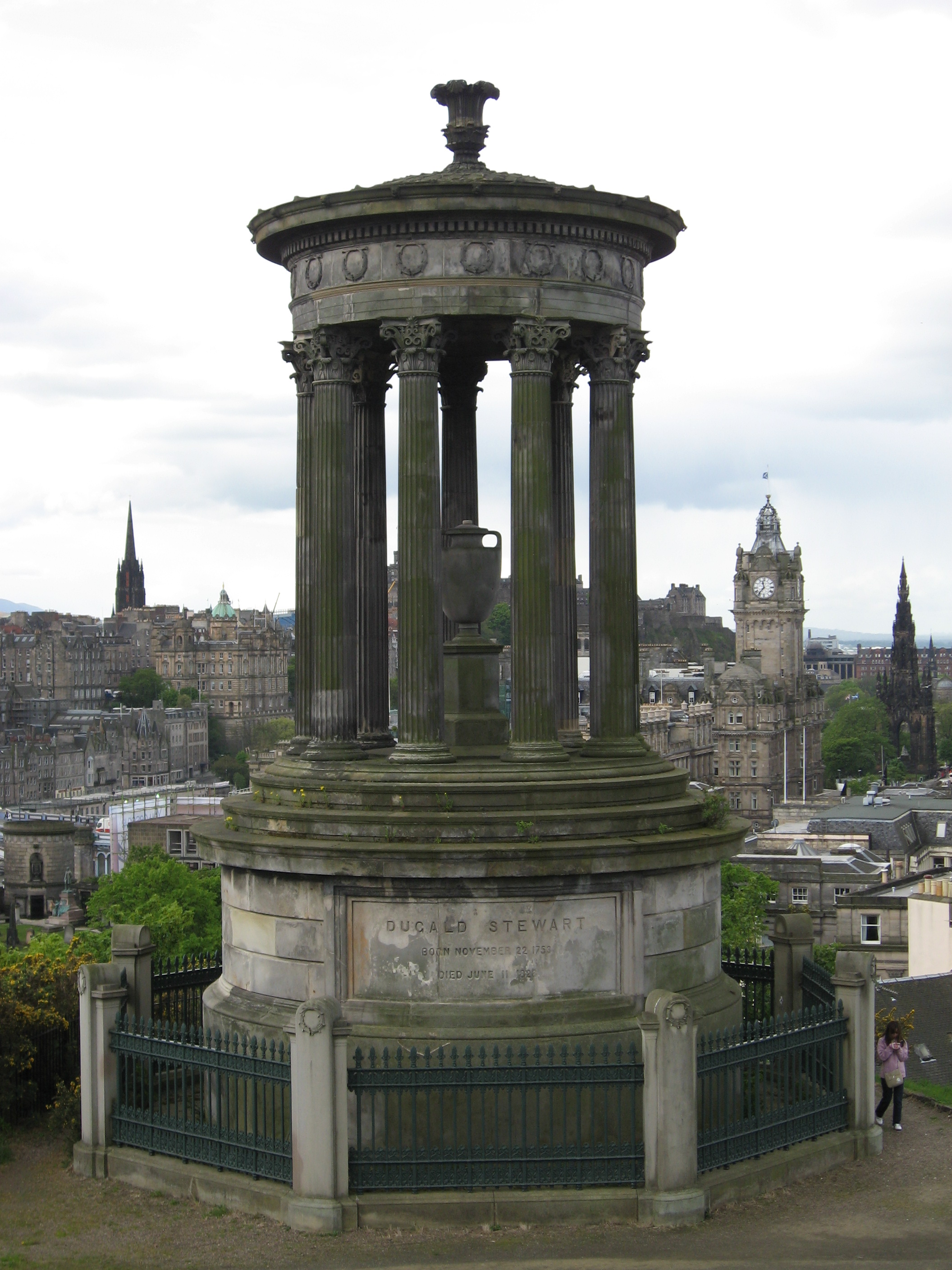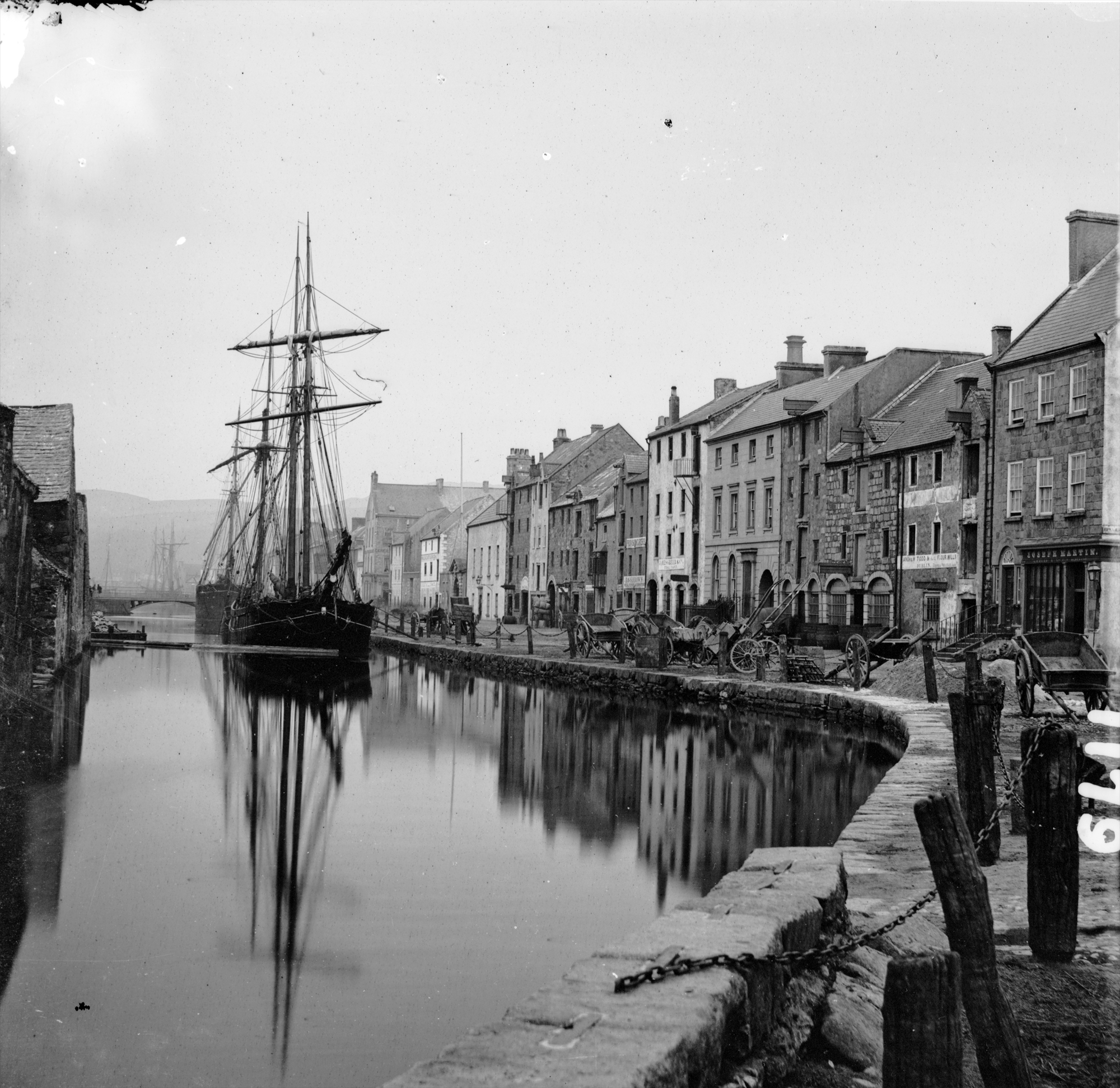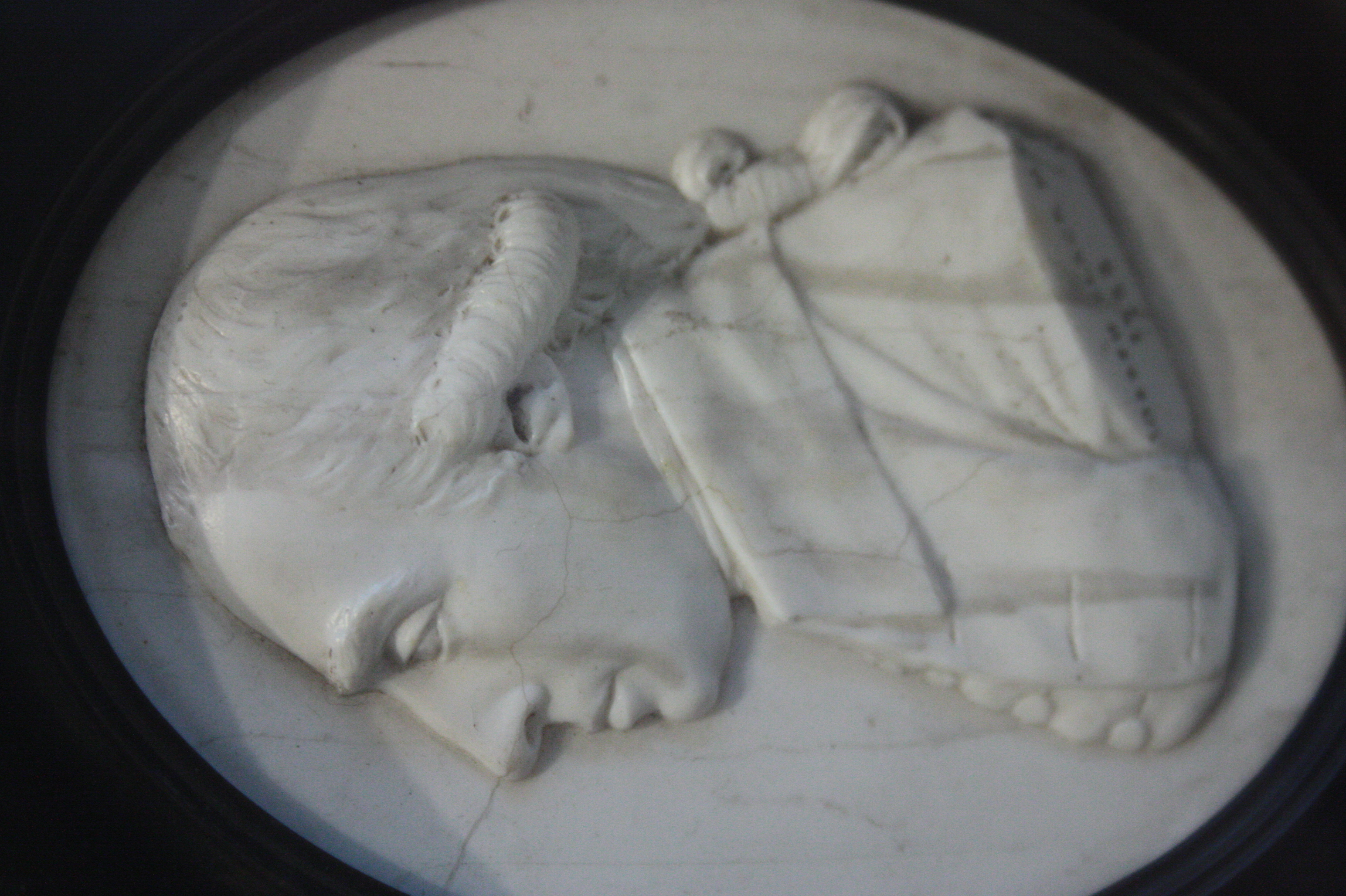|
William Drennan
William Drennan (23 May 1754 – 5 February 1820) was an Irish physician and writer who moved the formation in Belfast and Dublin of the Society of United Irishmen. He was the author of the Society's original "test" which, in the cause of representative government, committed "Irishmen of every religious persuasion" to a "brotherhood of affection". Drennan had been active in the Irish Volunteer movement and achieved renown with addresses to the public as his "fellow slaves" and to the British Viceroy urging "full and final" Catholic emancipation. After the suppression of the 1798 Rebellion, he sought to advance democratic reform through his continued journalism and through education. With other United Irish veterans, Drennan founded the Belfast ater the ''Royal'' BelfastAcademical Institution. As a poet, he is remembered for his eve-of-rebellion ''When Erin First Rose'' (1795) with its reference to Ireland as the "Emerald Isle". Enlightenment education William Drennan (a ... [...More Info...] [...Related Items...] OR: [Wikipedia] [Google] [Baidu] |
Belfast
Belfast ( , ; from ga, Béal Feirste , meaning 'mouth of the sand-bank ford') is the capital and largest city of Northern Ireland, standing on the banks of the River Lagan on the east coast. It is the 12th-largest city in the United Kingdom and the second-largest in Ireland. It had a population of 345,418 . By the early 19th century, Belfast was a major port. It played an important role in the Industrial Revolution in Ireland, briefly becoming the biggest linen-producer in the world, earning it the nickname "Linenopolis". By the time it was granted city status in 1888, it was a major centre of Irish linen production, tobacco-processing and rope-making. Shipbuilding was also a key industry; the Harland and Wolff shipyard, which built the , was the world's largest shipyard. Industrialisation, and the resulting inward migration, made Belfast one of Ireland's biggest cities. Following the partition of Ireland in 1921, Belfast became the seat of government for Northern Ireland ... [...More Info...] [...Related Items...] OR: [Wikipedia] [Google] [Baidu] |
Dugald Stewart
Dugald Stewart (; 22 November 175311 June 1828) was a Scottish philosopher and mathematician. Today regarded as one of the most important figures of the later Scottish Enlightenment, he was renowned as a populariser of the work of Francis Hutcheson and Adam Smith. His lectures at the University of Edinburgh were widely disseminated by his many influential students. In 1783 he was a joint founder of the Royal Society of Edinburgh. In most contemporary documents he is referred to as Prof Dougal Stewart. Early life He was the son of Matthew Stewart (1715–1785), professor of mathematics at the University of Edinburgh (1747–1772), and was born in his father's quarters at Old College. His mother was Marjory Stewart, his father's cousin. He was educated at the High School and the University of Edinburgh, where he studied mathematics and moral philosophy under Adam Ferguson. In 1771, in the hope of gaining a Snell Exhibition Scholarship and proceeding to Oxford to study for ... [...More Info...] [...Related Items...] OR: [Wikipedia] [Google] [Baidu] |
Newry
Newry (; ) is a city in Northern Ireland, divided by the Clanrye river in counties Armagh and Down, from Belfast and from Dublin. It had a population of 26,967 in 2011. Newry was founded in 1144 alongside a Cistercian monastery, although there are references to earlier settlements in the area, and is one of Ireland's oldest towns. The city is an entry to the " Gap of the North", from the border with the Republic of Ireland. It grew as a market town and a garrison and became a port in 1742 when it was linked to Lough Neagh by the first summit-level canal built in Ireland or Great Britain. A cathedral city, it is the episcopal seat of the Roman Catholic Diocese of Dromore. In 2002, as part of Queen Elizabeth's Golden Jubilee celebrations, Newry was granted city status along with Lisburn. Name The name Newry is an anglicization of ''An Iúraigh'', an oblique form of ''An Iúrach'', which means "the grove of yew trees". The modern Irish name for Newry is ''An tIúr'' ( ... [...More Info...] [...Related Items...] OR: [Wikipedia] [Google] [Baidu] |
Cowpox
Cowpox is an infectious disease caused by the ''cowpox virus'' (CPXV). It presents with large blisters in the skin, a fever and swollen glands, historically typically following contact with an infected cow, though in the last several decades more often (though overall rarely) from infected cats. The hands and face are most frequently affected and the spots are generally very painful. The virus, part of the genus '' Orthopoxvirus'', is closely related to the ''vaccinia'' virus. The virus is zoonotic, meaning that it is transferable between species, such as from cat to human. The transferral of the disease was first observed in dairymaids who touched the udders of infected cows and consequently developed the signature pustules on their hands.Vanessa Ngan, "Viral and Skin Infections" 2009 Cowpox is more com ... [...More Info...] [...Related Items...] OR: [Wikipedia] [Google] [Baidu] |
Edward Jenner
Edward Jenner, (17 May 1749 – 26 January 1823) was a British physician and scientist who pioneered the concept of vaccines, and created the smallpox vaccine, the world's first vaccine. The terms ''vaccine'' and ''vaccination'' are derived from ''Variolae vaccinae'' ('pustules of the cow'), the term devised by Jenner to denote cowpox. He used it in 1798 in the title of his ''Inquiry into the Variolae vaccinae known as the Cow Pox'', in which he described the protective effect of cowpox against smallpox. In the West, Jenner is often called "the father of immunology", and his work is said to have saved "more lives than any other man". In Jenner's time, smallpox killed around 10% of global population, with the number as high as 20% in towns and cities where infection spread more easily. In 1821, he was appointed physician to King George IV of the United Kingdom, George IV, and was also made mayor of Berkeley, Gloucestershire, Berkeley and justice of the peace. A member of the Ro ... [...More Info...] [...Related Items...] OR: [Wikipedia] [Google] [Baidu] |
Smallpox
Smallpox was an infectious disease caused by variola virus (often called smallpox virus) which belongs to the genus Orthopoxvirus. The last naturally occurring case was diagnosed in October 1977, and the World Health Organization (WHO) certified the global eradication of the disease in 1980, making it the only human disease to be eradicated. The initial symptoms of the disease included fever and vomiting. This was followed by formation of ulcers in the mouth and a skin rash. Over a number of days, the skin rash turned into the characteristic fluid-filled blisters with a dent in the center. The bumps then scabbed over and fell off, leaving scars. The disease was spread between people or via contaminated objects. Prevention was achieved mainly through the smallpox vaccine. Once the disease had developed, certain antiviral medication may have helped. The risk of death was about 30%, with higher rates among babies. Often, those who survived had extensive scarring of their ... [...More Info...] [...Related Items...] OR: [Wikipedia] [Google] [Baidu] |
Variolation
Variolation was the method of inoculation first used to immunize individuals against smallpox (''Variola'') with material taken from a patient or a recently variolated individual, in the hope that a mild, but protective, infection would result. Variolation is no longer used today. It was replaced by the smallpox vaccine, a safer alternative. This in turn led to the development of the many vaccines now available against other diseases. The procedure was most commonly carried out by inserting/rubbing powdered smallpox scabs or fluid from pustules into superficial scratches made in the skin. The virus was normally spread through the air, infecting first the mouth, nose, or respiratory tract, before spreading throughout the body via the lymphatic system. In contrast, infection of the skin usually led to a milder, localized infection, but, crucially, still induced immunity to the virus. The patient would develop pustules like those caused by naturally acquired smallpox. Eventually, after ... [...More Info...] [...Related Items...] OR: [Wikipedia] [Google] [Baidu] |
Belfast Charitable Society
The Belfast Charitable Society, founded in 1752, is Belfast's oldest charitable organisation. It continues its philanthropic work from Clifton House which the Society opened, originally as the town's poor house and infirmary, in 1774. History In 1752 a group of Belfast's leading merchants agreed that "a poor-house and hospital are greatly wanted in Belfast for the support of vast numbers of real objects of charity in this parish, for the employment of idle beggars who crowd to it from all parts of the North, and for the reception of infirm and diseased poor". The growth of the town's port and the textile industry had been drawing in poor, often destitute, labourers and their families, from the surrounding districts. The town's burgesses, the exclusive nominees of the Earls (later Marquesses), of Donegall, had made little or no provision to alleviate their frequent and chronic distress. The Society raised money through a lottery scheme and subscription and, following formal r ... [...More Info...] [...Related Items...] OR: [Wikipedia] [Google] [Baidu] |
Obstetrics
Obstetrics is the field of study concentrated on pregnancy, childbirth and the postpartum period. As a medical specialty, obstetrics is combined with gynecology under the discipline known as obstetrics and gynecology (OB/GYN), which is a surgical field. Main areas Prenatal care Prenatal care is important in screening for various complications of pregnancy. This includes routine office visits with physical exams and routine lab tests along with telehealth care for women with low-risk pregnancies: Image:Ultrasound_image_of_a_fetus.jpg, 3D ultrasound of fetus (about 14 weeks gestational age) Image:Sucking his thumb and waving.jpg, Fetus at 17 weeks Image:3dultrasound 20 weeks.jpg, Fetus at 20 weeks First trimester Routine tests in the first trimester of pregnancy generally include: * Complete blood count * Blood type ** Rh-negative antenatal patients should receive RhoGAM at 28 weeks to prevent Rh disease. * Indirect Coombs test (AGT) to assess risk of hemolytic dis ... [...More Info...] [...Related Items...] OR: [Wikipedia] [Google] [Baidu] |
William Cullen
William Cullen FRS FRSE FRCPE FPSG (; 15 April 17105 February 1790) was a Scottish physician, chemist and agriculturalist, and professor at the Edinburgh Medical School. Cullen was a central figure in the Scottish Enlightenment: He was David Hume's physician, and was friends with Joseph Black, Henry Home, Adam Ferguson, John Millar, and Adam Smith, among others. He was President of the Royal College of Physicians and Surgeons of Glasgow (1746–47), President of the Royal College of Physicians of Edinburgh (1773–1775) and First Physician to the King in Scotland (1773–1790). He also assisted in obtaining a royal charter for the Philosophical Society of Edinburgh, resulting in the formation of the Royal Society of Edinburgh in 1783. Cullen was a beloved teacher, and many of his students became influential figures. He kept in contact with many of his students, including Benjamin Rush, a central figure in the founding of the United States of America; John Morgan, who fou ... [...More Info...] [...Related Items...] OR: [Wikipedia] [Google] [Baidu] |
Joseph Black
Joseph Black (16 April 1728 – 6 December 1799) was a Scottish physicist and chemist, known for his discoveries of magnesium, latent heat, specific heat, and carbon dioxide. He was Professor of Anatomy and Chemistry at the University of Glasgow for 10 years from 1756, and then Professor of Medicine and Chemistry at the University of Edinburgh from 1766, teaching and lecturing there for more than 30 years. The chemistry buildings at both the University of Edinburgh and the University of Glasgow are named after Black. Early life and education Black was born "on the banks of the river Garonne" in Bordeaux, France, the sixth of the 12 children of Margaret Gordon (''d''. 1747) and John Black. His mother was from an Aberdeenshire family that had connections with the wine business and his father was from Belfast, Ireland and worked as a factor in the wine trade. He was educated at home until the age of 12, after which he attended grammar school in Belfast. In 1746 at the age of ... [...More Info...] [...Related Items...] OR: [Wikipedia] [Google] [Baidu] |
Edinburgh
Edinburgh ( ; gd, Dùn Èideann ) is the capital city of Scotland and one of its 32 Council areas of Scotland, council areas. Historically part of the county of Midlothian (interchangeably Edinburghshire before 1921), it is located in Lothian on the southern shore of the Firth of Forth. Edinburgh is Scotland's List of towns and cities in Scotland by population, second-most populous city, after Glasgow, and the List of cities in the United Kingdom, seventh-most populous city in the United Kingdom. Recognised as the capital of Scotland since at least the 15th century, Edinburgh is the seat of the Scottish Government, the Scottish Parliament and the Courts of Scotland, highest courts in Scotland. The city's Holyrood Palace, Palace of Holyroodhouse is the official residence of the Monarchy of the United Kingdom, British monarchy in Scotland. The city has long been a centre of education, particularly in the fields of medicine, Scots law, Scottish law, literature, philosophy, the sc ... [...More Info...] [...Related Items...] OR: [Wikipedia] [Google] [Baidu] |

.png)


.png)




